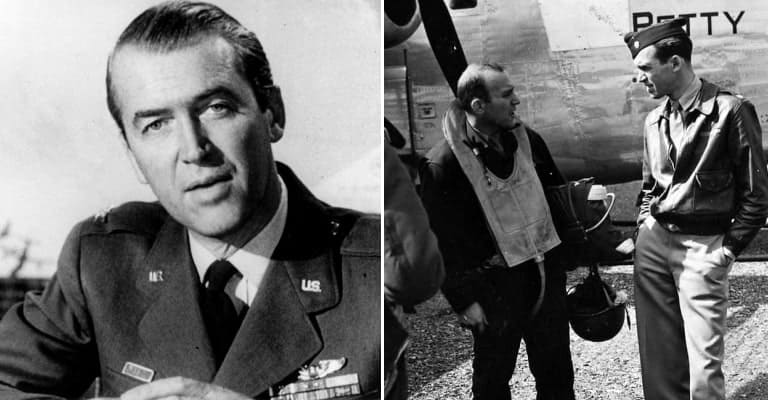James, “Jimmy” Stewart was one of the most beloved actors in American history. He starred in comedies, dramas, mysteries, westerns, on film, stage, and television. Stewart was a master of them all. He worked with directors as diverse as Frank Capra, Alfred Hitchcock, and John Ford. During his lifetime his easily recognizable drawl coupled with a halting manner of speech was widely imitated, often to his own amusement. He was married but once, for forty-five years to his wife Gloria, whom he met after crashing a Christmas party in 1947. They didn’t begin dating for another year, in part because the somewhat intoxicated Stewart failed to make a good impression.

He was a veteran of the Second World War, among the first major Hollywood stars to enlist. He flew bombers over Nazi-occupied Europe, receiving the Distinguished Flying Cross and the French Croix de Guerre for his service. Less well known was his participation as an observer in a B-52 raid in Vietnam in 1966. Following World War II, he returned to acting and appeared in some of his most acclaimed movies, including It’s A Wonderful Life, which was a minor success when released. It has since become an American Christmas classic. Here is some of the wonderful life of Jimmy Stewart, itself a story of an American classic.
1. He was a product of small-town America who graduated from Princeton University

James Stewart was raised in the coal-mining town of Indiana, Pennsylvania. He grew up loving music, and learned to play the accordion, when one of his father’s customers paid part of debt by giving him the instrument. His father owned and operated the J. M. Stewart and Company Hardware Store. The elder Stewart hoped the son would take over the business after the latter complete college, but while attending Princeton the younger Stewart caught the acting bug. He enrolled there in 1928, having become interested in flying, magic, acting, and singing while in prep school. He also grew to a lanky 6’4″ height, with exceptionally long legs.
Stewart majored in architecture and developed a talent in airport design, which led to his being offered a scholarship for graduate school. But by then his interest in acting and performing on the accordion took precedence. Stewart joined the University Players, a stock company which held their summer performances in West Falmouth, on Cape Cod. Another performer with the company Stewart was Henry Fonda, and the two became lifelong friends. After graduation in 1932, Stewart completed the summer stock season and moved to New York to seek Broadway roles. Fonda joined him.

